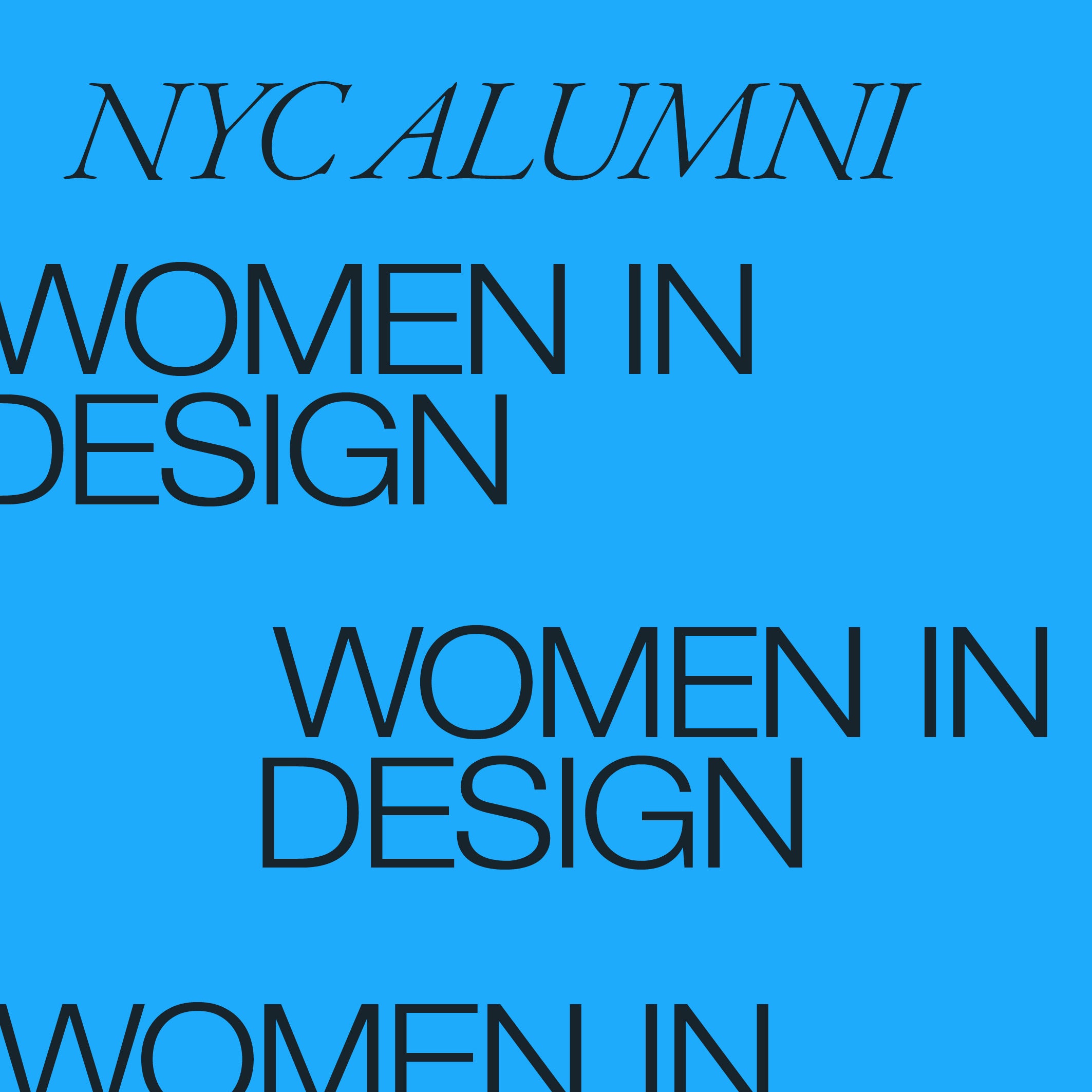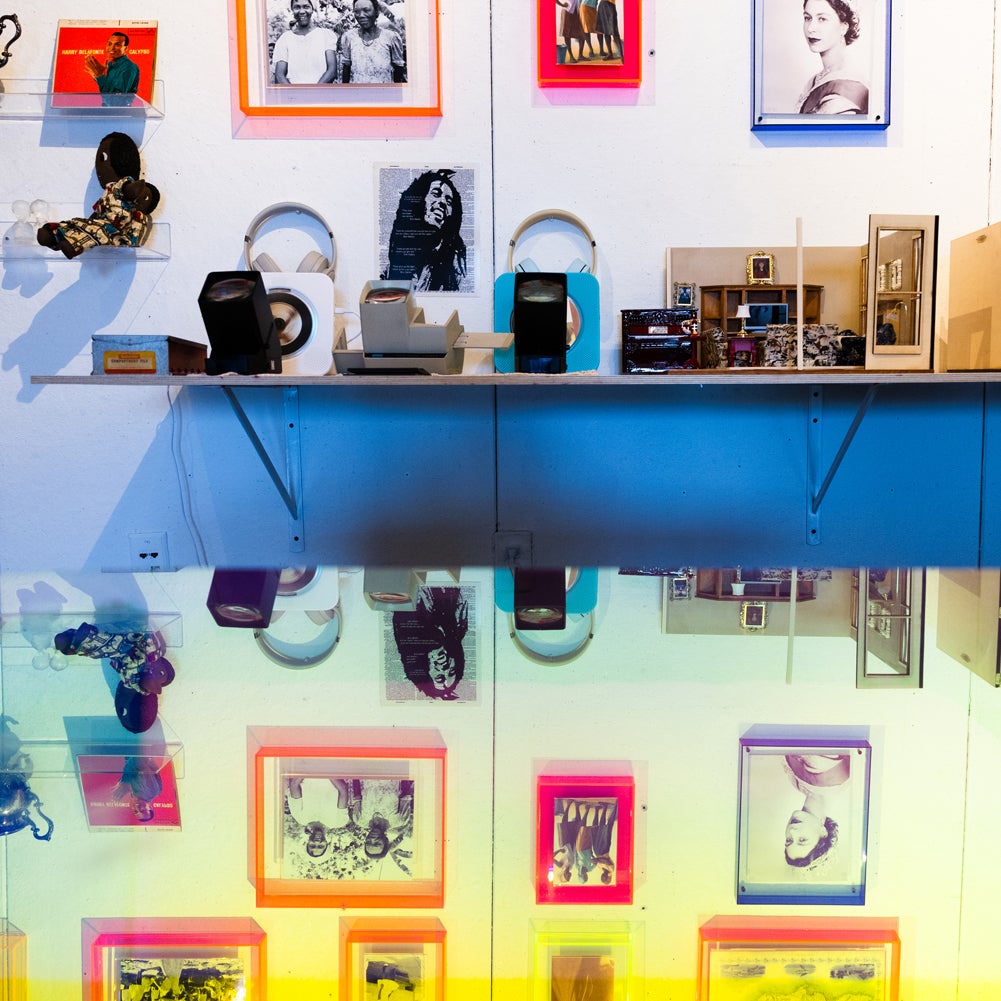
2023 Student Travel Fellows Showcase: A Visual Recap
Last month, a series of exhibitions by the 2023 Student Travel Fellows donned the walls of Campbell Hall like a visual travelogue. Inspired by research undertaken by School of Architecture graduate and undergraduate students in locations around the world, including Monterrey, Mexico, cities in France and Italy, Hong Kong, and geologically-rich regions across the US, the work was the final output of four endowed travel fellowships. In this visual recap, we revisit the fellows' artful analyses of a range of materials, built environments, and cultural landscapes.
YOU CAN MOVE MOUNTAINS (PUEDES MOVER MONTAÑAS)
2023 CARMEN FANZONE FELLOW JULIA MACNELLY, MLA '25 &
LYSETTE VELÁZQUEZ, MLA '25
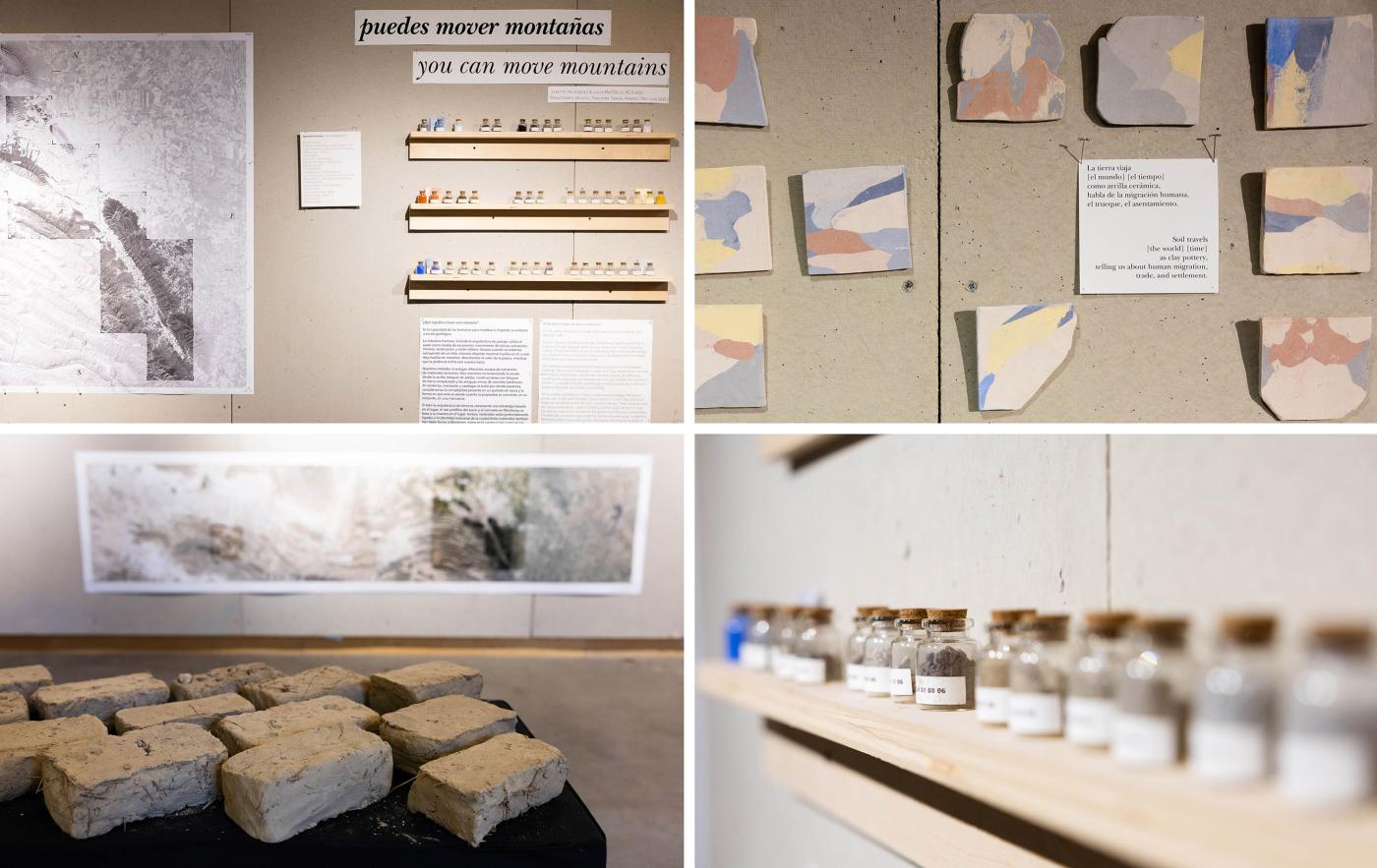
What does it mean to move a mountain?
This question framed the research of 2023 Fanzone Fellow Julia MacNelly (MLA '25) and Lysette Velázquez (MLA '25), who delved into the profound impact of human industry on landscapes, from intricate clay manipulations to vast concrete quarries. They explored the complex relationship between humans and earth, from absorbing heat from stone to the voids left by industrial extraction. Monterrey, Mexico's landscape serves as a poignant example, shaped by steel, concrete, and the dramatic mountains now flattened for urbanization. In the age of green energy, extraction processes persist, exemplified by Tesla's gigafactory located in Monterrey. The soil swatches and adobe bricks by MacNelly and Velázquez, were poetic reminders to visitors that a handful of earth has much to teach us.
A DIALOGUE WITH (RAIN) WATER: HONG KONG—場與(雨)水的對話:香港篇
2023 BENJAMIN C. HOWLAND FELLOWS
JOYCE FONG, MLA '24 & CELINA QIU, MLA '24
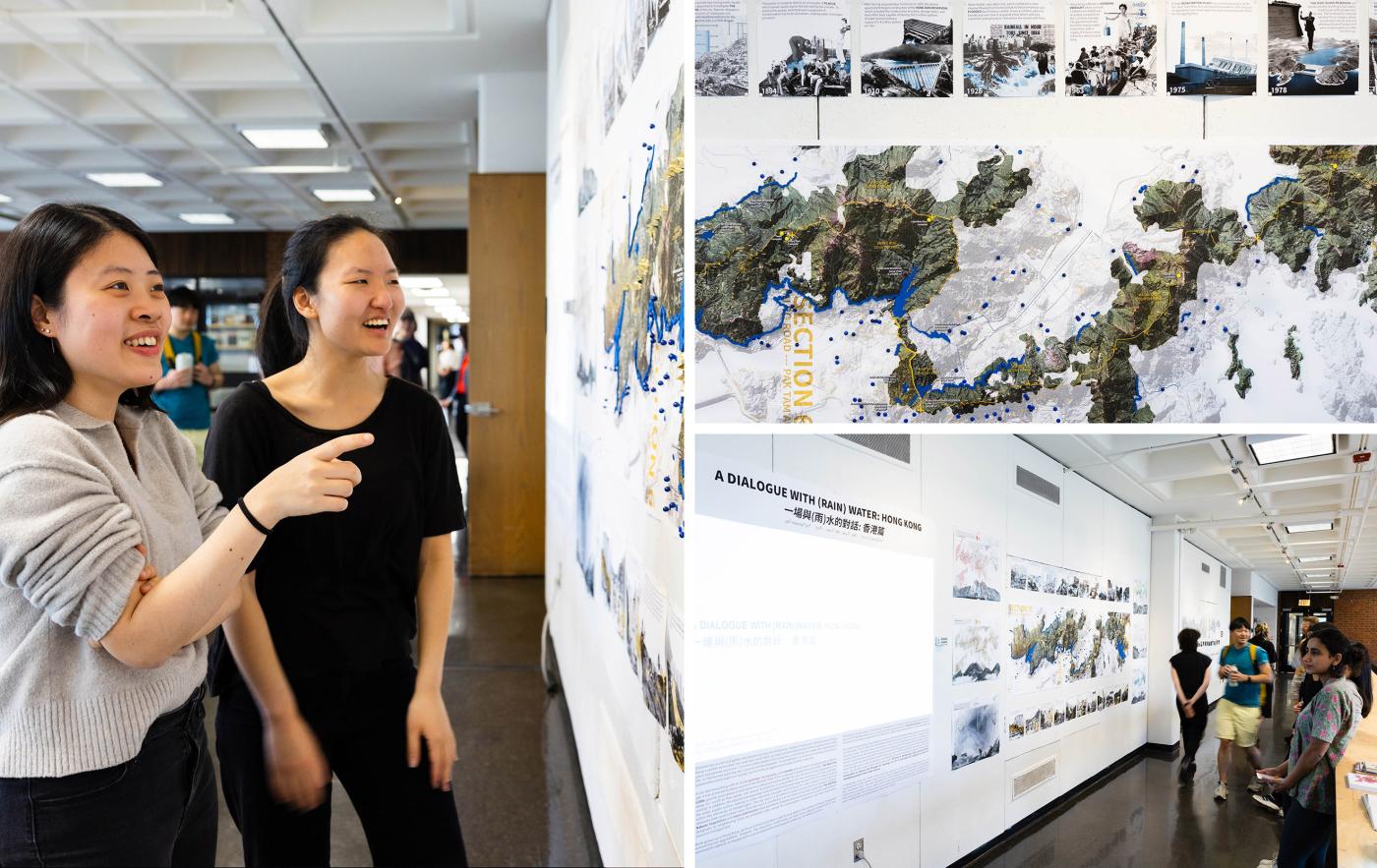
Both growing up in Hong Kong,
we have continuously been urged to save water in the context of
climate change and environmental degradation.
Last summer, Howland Fellows Joyce Fong (MLA '24) and Celina Qiu (MLA '24) studied and documented moments of ruination and transformation along the MacLehose Trail, a 100 km hike that stretches across Hong Kong's regional topography. Traversing eight designated country parks, the trail showcases Hong Kong's ecological diversity and stunning vistas, revealing the intricate balance between nature and human intervention. Initially crafted for water management, the trail's terrain serves as a testament to human ambition, channeling runoff to reservoirs through a calculated hydraulic system. The water system is a haven for thirsty, sweaty hiker and plants. Through their drawings, Fong and Qiu invited contemplation on the trail's role in reconnecting people with their water sources, sparking curiosity and appreciation for the natural world.
GEOLOGIC METANOIA: MATERIAL DOMESTICATION FROM THE AWESOME TO THE MUNDANE
2023 BENJAMIN C. HOWLAND FELLOWS
SOPHIE MAFFIE, MLA '24 & MARISSA WALRATH, MLA '24
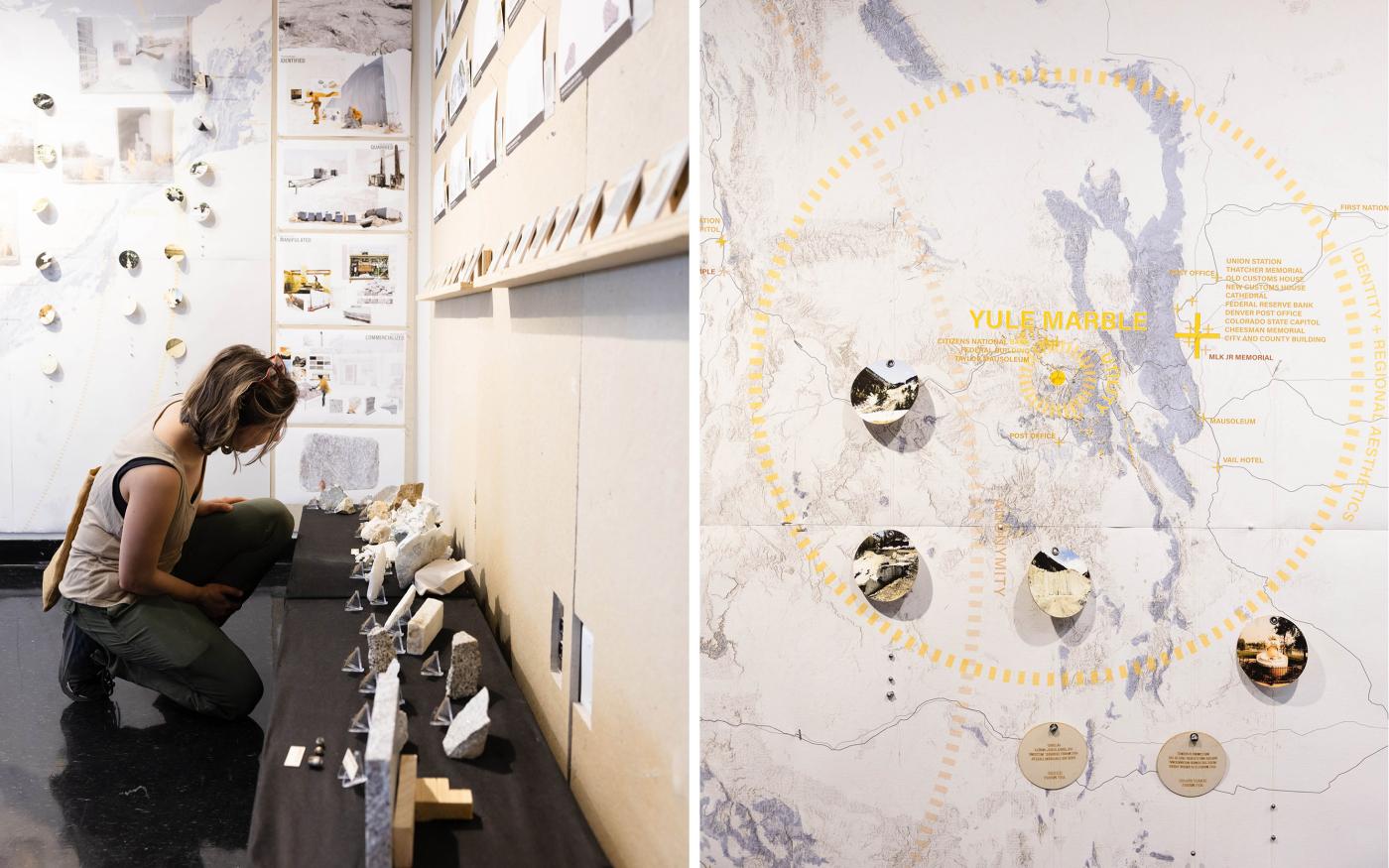
We must recognize the coupling of man and the vibrant matter of rock.
For their Howland Fellowship, Sophie Maffie (MLA '24) and Marissa Walrath (MLA '24) studied the interplay between culture, design, and geology. The culminating exhibition, Geologic Metanoia explored how our perception of rocks evolves within different landscapes, from natural parks to quarries. It highlights the transformation of geological materials through design, where rocks lose their origin and significance, and become mere commodities. By exploring the disconnect between Earth reverence and material mundanity, the project sheds light on the domestication of the planet and its impact on constructed landscapes. Through a series of rock studies across the US, Maffie and Walrath examined the processes of extraction, commodification, and exoticization that shape our understanding of geology. Their show served as a manifesto—complete with rock trading cards that visitors could collect—calling for a reevaluation of our relationship with rocks, advocating for their recognition as vital entities and emphasizing their geological properties.
CANAL CONNECTIVITY
2023 SARAH MCARTHUR NIX FELLOW
MATTHEW TEPPER, BS ARCH '24

The canal serves as a metaphor to encourage connectivity through community-building, recreation, and resilience.
Centered on Paris's Canal de l'Ourcq and Saint-Martin regions, Matthew Tepper's 2023 Nix Fellowship research examined architectural and planning catalysts influencing waterfront development. Prioritizing nature-centric experiences in urban settings, his study underscores the need for investment in public infrastructure, transportation, and historical conservation. Serving as a symbol of connectivity, Tepper's drawings reveal how the canals foster community, recreation, and resilience. Through historical scrutiny and innovative design, his research aims to grasp and enrich waterfront features, nurturing connectivity and urban progress on a global scale.
I TEMPLI DEL TEMPO: The Development and Adaptation of Italian Catholic Churches Through Time
2023 CARLO PELLICCIA FELLOW
JULIANA JACKSON, M. ARCH '25
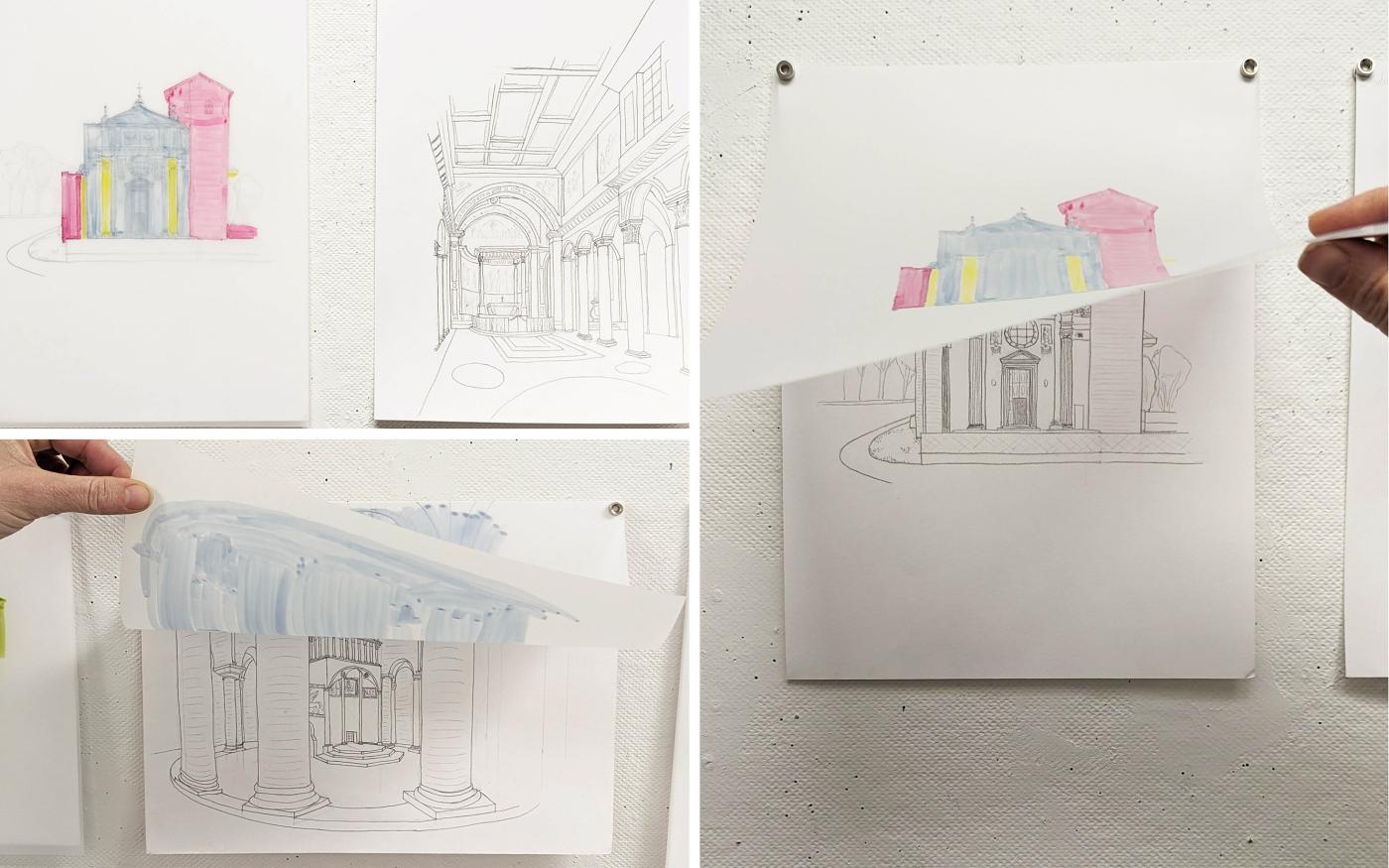
In Italy, Catholic churches often were built on top of or within existing structures.
In summer 2023, Pelliccia Fellow Juliana Jackson (M. Arch '25) investigated the historical relationship between Italy's built environment and its complex religious heritage. The resulting exhibition, I Templi Del Tempo explored the intersection of history and architecture, examining how churches in Italy were built, renovated, and repurposed from the 1st to the 19th centuries. Some churches incorporated existing structures, showcasing layers of history in their walls and arches, like the Basilica di Santo Stefano in Bologna. Others were constructed above earlier buildings, concealing their ancient origins until visitors descend underground, as seen in Basilica di San Clemente al Laterano in Rome. Other structures blend both approaches, incorporating ancient columns into Medieval and Renaissance architecture. Through sketches and temporal analysis, Jackson invited visitors to uncover the rich layers of Italy's architectural evolution and cultural significance.
Student travel fellowships are supported by endowments established in honor of Carmen Fanzone, Benjamin C. Howland, Sarah McArthur Nix, and Carlo Pelliccia.

